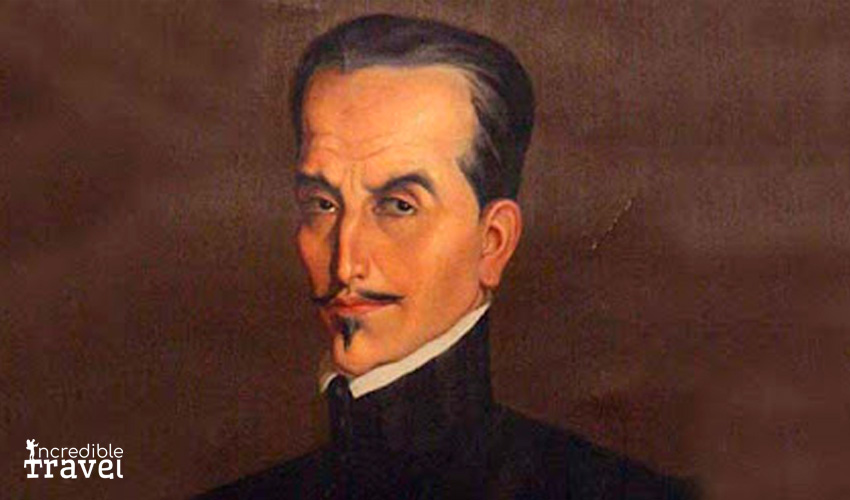Cusco letters.
With the sword and with the pen.
Known universally as Inca Garcilaso de la Vega, he has become a Symbol of Peru due to his condition as a mestizo, the son of a Spanish conqueror and an indigenous princess, but above all for his famous work, the Royal Commentaries of the Incas, which, despite Of the historical objections that are currently made, it gives us the most enduring, albeit idealized, image of Inca society.
Garcilaso was born in Cusco on April 12, 1539. His father was Captain Sebastian Garcilaso de la Vega Vargas, from an illustrious Toledo family, and his mother, ñusta Chimpu Ocllo, who later adopted the Christian name of Isabel Suárez. He was baptized as Gómez Suárez de Figueroa (Using one of the surnames of the paternal lineage, according to the custom of the time), a name that he kept for many years. During his childhood he had the opportunity to go to the court of Sayri Túpac, the Inca recognized by the conquerors and to deal with many maternal relatives, who belonged to the most rancid Inca nobility, thus, he was a direct witness, also by hearsay, through the stories of their relatives, the decline of the Tahuantinsuyo. His education was in charge of formally was in charge of Spanish teachers, with whom he learned Latinidad, History and Christian Doctrine.
In 1560, a year after the death of his father, who had married a Spanish lady in 1557, he left for Spain to educate himself. Although he was welcomed by his paternal family, from the lineage of the Marquis of Priego, Garcilaso will not fail to feel raw the condition of his natural son.
For this reason, and due to economic needs, shortly after arriving he will initiate a series of long negotiations before the Madrid court to achieve recognition of his rights as the son of a conqueror. However, in the investigation of the file, the conduct of his father during the civil wars was questioned, and the Inca saw his attempts frustrated. Embittered, he asked for a license to return to Peru, but that possibility was also denied.
With many men of his time, he wore the military uniform and fought in Navarra and Italy. He also, in 1570, in the war against the rebellious Moors in the Granada mountain ranges of the Alpujarras, occasion in which he obtained the rank of captain.
Separated from the military, his life will be directed towards the world of letters. In 1590 the translation from the Indian of the three love dialogues by León Hebreo, his first book, appeared in Madrid. It would follow, published in Lisbon in 1605, La Florida del Inca. In this book, which recounts Hernando de Soto’s expedition to North America, Garcilaso will train as a historian and storyteller by processing the testimony of a direct witness to the events, the old soldier Gonzalo Silvestre, also a friend and companion of his father in the conquest of Peru.
Also in Lisbon, in 1609, the first part of the Royal Commentaries of the Incas was published. Work composed of new books, in it Garcilaso undertakes a task of encyclopedic proportions by tracing the history of the Incas and describing their customs. Its vast Renaissance culture is the framework that gives meaning to a dynamic vision of history, in which humanity moves towards increasingly civilized forms, a perspective that allows it, while exalting the achievements of the Inca empire, justifying the Spanish conquest. It is impossible to fail to observe, however, that despite recognizing, intellectually, the superiority of European culture, especially for having contributed the true religion, emotionally Garcilaso adheres to his maternal ancestors and makes his book a fiery praise of the Inca greatness. Nourished by nostalgia, the writing of the Royal Commentaries is based fundamentally on the memory of the author and on his ability to interpret the first-hand testimonies that he has collected from his indigenous relatives. It is not surprising, therefore, that he begins the book with the proclamation of his knowledge of Quechua, a domain that would give him an advantage over other historians, who did not understand well the words they heard, because, as foreigners in that language, they interpreted outside the property her. Of course, Garcilaso used for his work all the other sources available to him, from the printed matter to the news of the travelers recently arrived from the Indies, in addition to those sent to him at his request. his relatives from Cusco.
The second part of the Royal Commentaries was published posthumously in Córdoba in 1617 under the name Historia General del Perú. If in the first he had praised the Inca, in this one he recounted the conquest and civil wars and vindicated the memory of his father.
In his old age he suffered some financial difficulties, but I can build a chapel in the Cathedral of Córdoba, where he asked to find out. He died in the Clean Conception hospital in that city, on April 23, 1616, coincidentally on the same day that Miguel de Cervantes and William Shakespeare died. In his testament he mentions a son of his had with a possibly Moorish maid, but in his spiritual testament he opens his mind to all Peruvians. The remoteness of Peru, now definitively closed upon return, and the proximity of death had increased Garcilaso’s longing and in the dedication of the History, perhaps the last lines he wrote, he addresses “To the Indians, mestizos and reindeer and provinces of the great and very rich empire of Peru, the Inca Garcilaso de la Vega, his brother, compatriot and countryman, health and happiness.
The phrase, of perfect Renaissance symmetry, relates the two series of nouns: “Indians” corresponds to “brother”, “mestizos” to compatriot “(that is, from a common homeland) and “Criollos” to countryman (this es, born in the same country). There is no doubt where Garcilaso deposited his heart.

